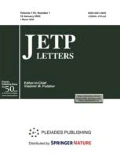Abstract
The thermal properties of graphene oxide containing hydroxyl and epoxy functional groups were studied using non-equilibrium molecular dynamics to understand the thermal transport phenomena involved and the structure factors limiting heat conduction. Estimates were given in terms of phonon mean free paths for the reduction in thermal conductivity by interior defects due to scattering. The mechanism of phonon transport in the graphene oxide was discussed. The results indicated that the degree of oxidation can significantly affect the thermal performance of graphene oxide. A low degree of oxidation is necessary to enhance the phonon transport properties of graphene oxide and reduce the probability of phonon-defect scattering. Phonon transport in graphene oxide with a high degree of oxidation is governed by the mean free path of phonons associated with scattering from interior defects. Oxygen-containing functional groups can adversely affect performance and reduce the efficiency of phonon transport in graphene oxide due to phonon mean free paths limited mainly by interior defects. The calculated intrinsic thermal conductivity of graphene oxide at room temperature is about 72 W/(m K) with an oxidation degree of 0.35 and about 670 W/(m K) with an oxidation degree of 0.05. The phonon mean free path decreases with increasing the degree of oxidation due to enhanced phonon-defect scattering, making the thermal conductivity very sensitive to the concentration of oxygen-containing functional groups.
Similar content being viewed by others
References
A. K. Geim and K. S. Novoselov, Nat. Mater. 6, 183 (2007).
A. K. Geim, Science (Washington, DC, U. S.) 324 (5934), 1530 (2009).
K. I. Bolotin, K. J. Sikes, Z. Jiang, M. Klima, G. Fudenberg, J. Hone, P. Kim, and H. L. Stormer, Solid State Commun. 146, 351 (2008).
S. Ghosh, W. Bao, D. L. Nika, S. Subrina, E. P. Pokatilov, C. N. Lau, and A. A. Balandin, Nat. Mater. 9, 555 (2010).
S. P. Clark, Jr., Handbook of Physical Constants (Geol. Soc. America, New York, 1966).
C. Y. Ho, R. W. Powell, and P. E. Liley, J. Phys. Chem. Ref. Data 1, 279 (1972).
W. Lu, P. Soukiassian, and J. Boeckl, MRS Bull. 37, 1119 (2012).
W. Feng, M. Qin, and Y. Feng, Carbon 109, 575 (2016).
H. Song, J. Liu, B. Liu, J. Wu, H.-M. Cheng, and F. Kang, Joule 2, 442 (2018).
W. Li, Y. Huang, Y. Liu, M. C. Tekell, and D. Fan, Nano Today 29, 100799 (2019).
E. Pop, V. Varshney, and A. K. Roy, MRS Bull. 37, 1273 (2012).
A. A. Balandin, Nat. Mater. 10, 569 (2011).
Y. Ouyang, S. Sanvito, and J. Guo, Surf. Sci. 605, 1643 (2011).
T. Ma, Z. Liu, J. Wen, Y. Gao, X. Ren, H. Chen, C. Jin, X.-L. Ma, N. Xu, H.-M. Cheng, and W. Ren, Nat. Commun. 8, 14486 (2017).
T. Kuila, S. Bose, A. K. Mishra, P. Khanra, N. H. Kim, and J. H. Lee, Prog. Mater. Sci. 57, 1061 (2012).
D. R. Dreyer, S. Park, C. W. Bielawski, and R. S. Ruoff, Chem. Soc. Rev. 39, 228 (2010).
Q.-X. Pei, Z.-D. Sha, and Y.-W. Zhang, Carbon 49, 4752 (2011).
W. Huang, Q.-X. Pei, Z. Liu, and Y.-W. Zhang, Chem. Phys. Lett. 552, 97 (2012).
C.-J. Shih, S. Lin, R. Sharma, M. S. Strano, and D. Blankschtein, Langmuir 28, 235 (2012).
I. Chowdhury, M. C. Duch, N. D. Mansukhani, M. C. Hersam, and D. Bouchard, Environm. Sci. Technol. 47, 6288 (2013).
J. N. Hu, S. Schiffli, A. Vallabhaneni, X. L. Ruan, and Y. P. Chen, Appl. Phys. Lett. 97, 133107 (2010).
J. Y. Kim, J.-H. Lee, and J. C. Grossman, ACS Nano 6, 9050 (2012).
F. Müller-Plathe, J. Chem. Phys. 106, 6082 (1997).
S. Plimpton, J. Computat. Phys. 117, 1 (1995).
A. A. Balandin, S. Ghosh, W. Bao, I. Calizo, D. Teweldebrhan, F. Miao, and C. N. Lau, Nano Lett. 8, 902 (2008).
M. Ye, Z. Zhang, Y. Zhao, and L. Qu, Joule 2, 245 (2018).
Funding
work was supported by the National Natural Science Foundation of China (grant no. 51506048).
Author information
Authors and Affiliations
Corresponding authors
Supplemental Material
Rights and permissions
About this article
Cite this article
Chen, J., Li, L. Thermal Conductivity of Graphene Oxide: A Molecular Dynamics Study. Jetp Lett. 112, 117–121 (2020). https://doi.org/10.1134/S0021364020140015
Received:
Revised:
Accepted:
Published:
Issue Date:
DOI: https://doi.org/10.1134/S0021364020140015



